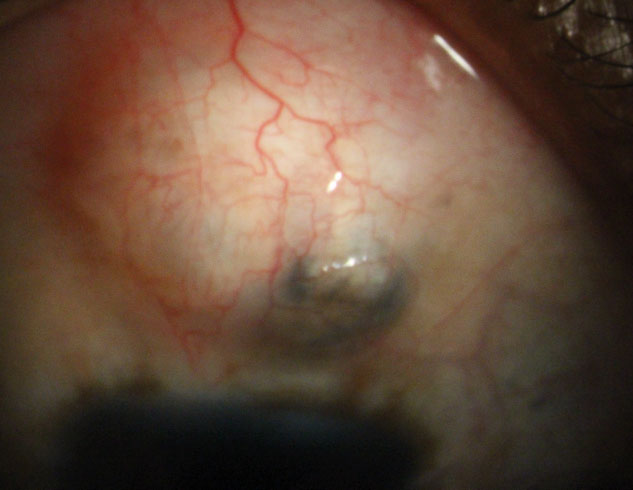 |
|
Trabeculectomy shows good long-term results as treatment for OAG. Photo: Justin Schweitzer, OD. Click image to enlarge. |
Editor’s Note: As part of our “Year in Review” retrospective, we’ve selected the top 30 news stories of the year and are re-sharing them as we close out 2023. Follow along as we count down to number 1!
This story was originally published February 10, 2023.
No. 10 biggest news story of 2023:
In a newly published study conducted at Johannes Gutenberg University in Mainz, Germany, individuals were assessed by researchers to evaluate long-term outcomes following operation to lower intraocular pressure (IOP).
The retrospective study included 435 eyes of 379 patients with open-angle glaucoma and who underwent trabeculectomy with mitomycin C. The follow-up period was a minimum of three years. Additionally, eyes that underwent cataract surgery within six months after filtration surgery were matched 1:3 by sex and age to eyes that did not need cataract surgery within the follow-up period. This was to ensure accurate assessment of cataract surgery influence following the trab.
The researchers quantified surgical success based on post-op IOP, surgical complications, need for revision surgery, loss of light perception and need for added pressure-lowering medication.
The average follow-up time was six years, with 73% of eyes displaying surgical success at the final follow-up. However, this percentage included those who needed additional medical therapy in come capacity. The percentage drops only slightly to 69% of eyes that needed no additional medical therapy. Success probability of surgery was not indicated to be influenced by cataract surgery after TE.
For comparison, the authors of the study note that similar, prior studies report anywhere from comparably high success rates to relatively low survival rates, as low as 35% after five years or 45.8% after two years. They do, however, explain that the low percentages could be because these surgeries were all performed by trainees, while this study exclusively had glaucoma specialists perform the operations.
The researchers additionally bring attention to the low rates of surgical complications observed in their study. The rate of hypotony was 3%, comparative but low on the spectrum of previously reported rates, ranging from 3% to 14%. For this low incidence, the authors believe it may have been due to usage of tight scleral flap sutures and laser suture lysis in cases when deemed necessary.
There were even better outcomes for complications of blebitis and endophthalmitis following surgery, with zero resulting cases. While reported incidence of endophthalmitis is extremely low at 0.1% to 1.3%, the authors believe that no cases developed in this study because of their use of fornix-based watertight conjunctival sutures. Usage of these may result in fewer bleb infections. Another possibility for this finding is their intraoperative rinsing of mitomycin C.
While the researchers point to the retrospective nature limiting ability to determine causal relationships, they do note in their paper on the study that their results “may underline the importance of centers of expertise in the treatment of glaucoma patients in order to reach safe and high-quality surgery with longstanding effectivity and thus preserving vision.”
Wagner FM, Schuster AK, Kianusch K, et al. Long-term success after trabeculectomy in open-angle glaucoma: Results of a retrospective cohort study. BMJ Open. 2023. [Epub ahead of print]. |

